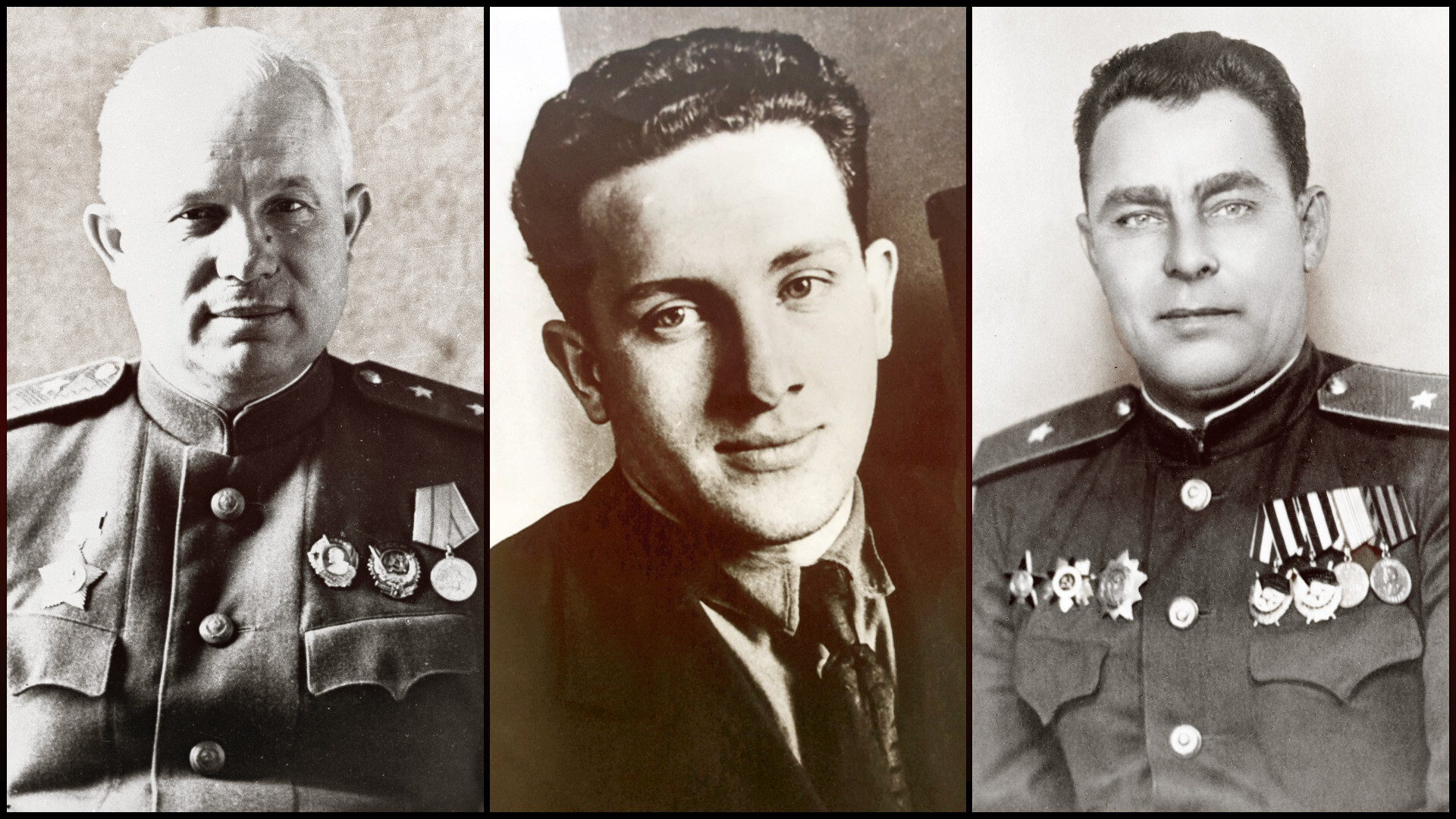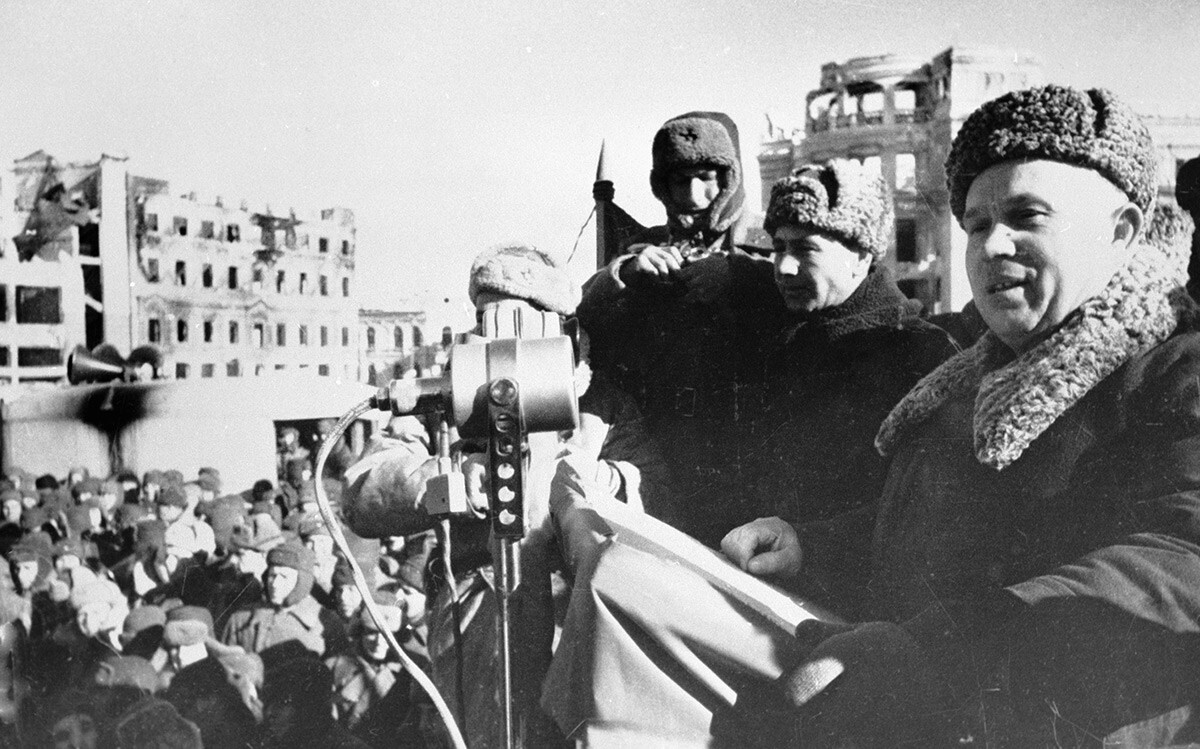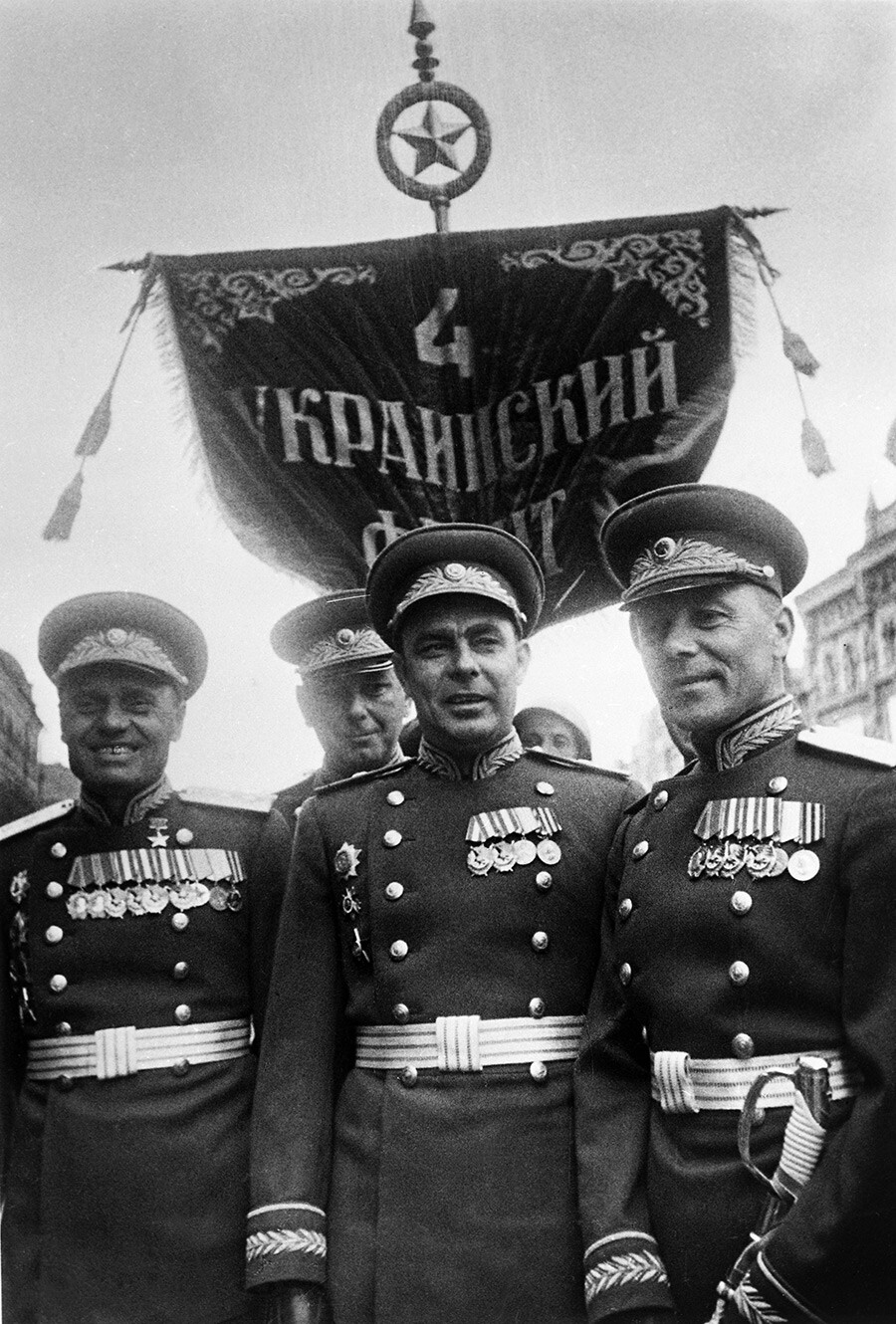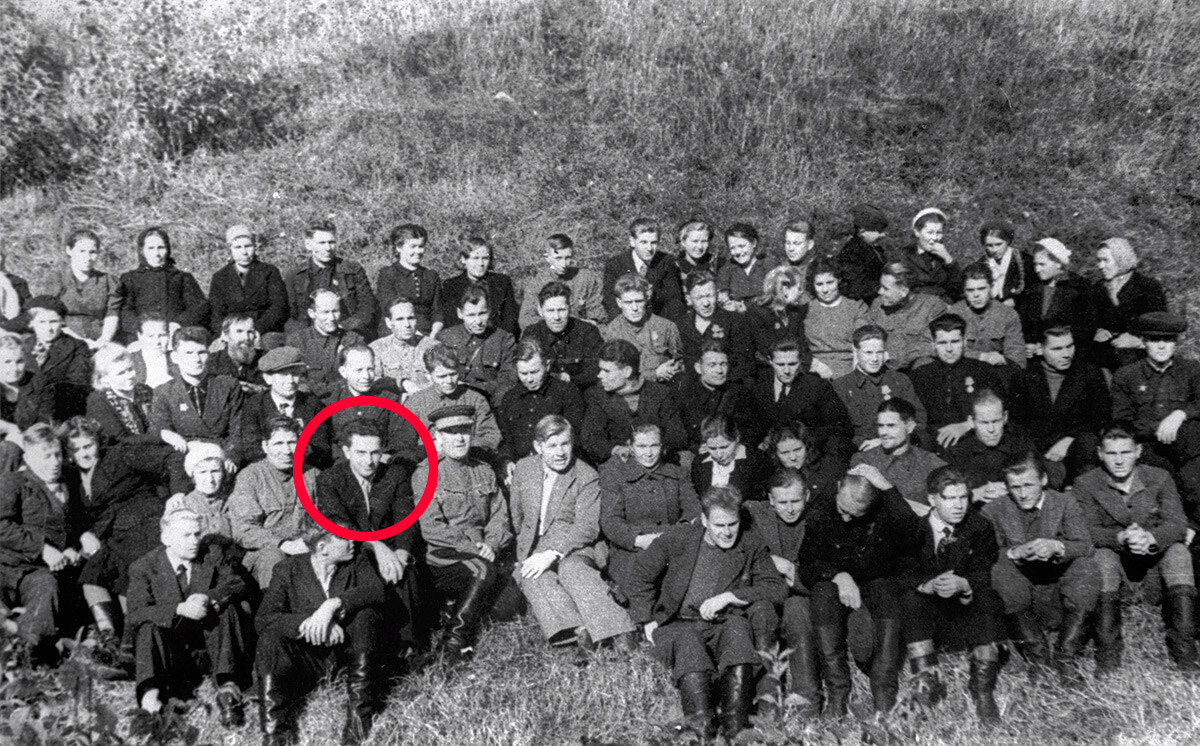

Nikita Khrushchev in Stalingrad.
Maks AlpertHaving taken up the reins of the country in September 1953, Nikita Khrushchev remained in power for eleven years. His stint included such key events as the de-Stalinization, a partial liberalization of public life (“thaw”) and the Cuban Missile Crisis.
Khrushchev joined the highest political elite of the Soviet Union in the years before World War II, becoming First Secretary of the Central Committee of the Communist Party (Bolsheviks) in 1938 and in 1939 - a member of the Politburo (the governing body of the Party). After the German attack, Nikita Sergeyevich was a member of the military councils of a number of fronts, including the Southwestern, Southern, Voronezh and Stalingrad fronts.
Military councils were collegial governing bodies that discussed and resolved key issues of the organization of combat operations, management, training and supply of troops. The councils consisted of the front commander, chief of staff, political officers and a number of other officials.
“I remember what tremendous political and organizational work Khrushchev did during the intense battles on the outskirts of Kiev,” Marshal Ivan Bagramyan recalled the events of the summer of 1941. “Always staying in the shops of factories and then on the front lines, Khrushchev, who enjoyed great trust of Kiev citizens and the troops, skillfully directed their actions to gain victory.”
Victory, however, did not happen then. In September, the city fell and a large Soviet group was trapped in the “cauldron”. Earlier, Khrushchev and several military commanders suggested leaving Kiev and building up defense along the left bank of the Dnieper, but Stalin forbade them to surrender the Ukrainian capital.
In May 1942, the Red Army launched an offensive near Kharkov, which ended in complete disaster and the loss of 270,000 soldiers. The role of Khrushchev as a member of the military council of the South-Western direction in those events is assessed differently. According to one version, as soon as the danger of cutting off and encircling the troops arose, he tried to persuade Stalin to stop the operation, but was refused. According to another version, Nikita Sergeevich himself was categorically against stopping the offensive, until it was too late.
General Semyon Ivanov recalled Khrushchev’s activities during the battles for Stalingrad: “This rather short, slightly overweight man with a simple smile always remained, if I may say so, a stabilizer of the situation within the circle of commanders who led the troops in the Battle of Stalingrad. The situation was tense, everyone worked literally to the point of exhaustion, so there were often nervous breakdowns, relationships became tense. Nikita Sergeyevich seemed to anticipate such moments and immediately found the right tone to calm down the conflicting sides… He also did a lot in terms of supplying the fronts with products of Stalingrad plants and factories. He was always a part of the working teams, helping to promptly solve the issues of interaction between factories and all the city services.”
During the war, Nikita Khrushchev was awarded with the orders of Kutuzov and Suvorov. He achieved victory in the rank of Lieutenant-General.

Leonid Brezhnev during the Victory Parade on the Red Square.
Yakov Khalip/SputnikLeonid Brezhnev, who overthrew Khrushchev in 1964, remained in power until his death in 1982. The long period of his reign is often referred to as the “stagnation era”. It was characterized by relative stability in all spheres of state life, a fairly high standard of living for its citizens and the absence of significant social upheavals, but, at the same time, a sharp decline in the pace of the country’s economic development.
Before the war, Brezhnev made a successful political career in Dnepropetrovsk. It was in military and political positions that he was to serve in the Red Army, into the ranks of which he was mobilized in June 1941.
Front correspondent of ‘The Red Star’ newspaper Pavel Troyanovsky met Leonid Ilyich in the Fall of 1942 in the North Caucasus: “Brigade commissar (note - approximately corresponded to the military rank of colonel) Brezhnev fulfilled several important tasks of the Military Council. And he did it in an exemplary manner! I was told that comrade Brezhnev was in the front regiments, which liberated Rostov-on-Don in 1946… You know how few combat awards we are given. Well, Leonid Ilyich Brezhnev was among the first political workers to receive the Order of the Red Banner!”
The most notable episode in Brezhnev’s military biography was the battle for Novorossiysk in 1943. On February 4, a detachment of marines of the 18th Army, in which Leonid Ilyich served as head of the political department, seized a small bridgehead on the shore of the Tsemesskaya Bay.
The Soviet troops held the bridgehead called ‘Malaya Zemlya’ (‘Small Land’), for 225 days, until the city was fully liberated. Brezhnev crossed there with his troops on landing ships and participated in battles dozens of times.
Once, he even had to replace a dead machine gunner and hold off the enemy infantry until help arrived. “At that time, the whole world shrank down for me to a narrow strip of land on which the Nazis were running. I don’t remember how long it lasted. Only one thought possessed my whole being: to stop them! I don’t think I heard the roar of the battle, I didn’t hear the sounds of the commands made nearby… I noticed only at some point that the enemy at whom I was not aiming fell down, as well: the soldiers who came to our rescue were firing,” wrote Leonid Ilyich in his book ‘Small Land’.
Brezhnev finished the war in the rank of major general. On June 24, 1945, he took part in the Victory Parade on the Red Square, marching at the front of the combined column of the 4th Ukrainian front together with commander General Andrey Eremenko.

Members of underground organizations in Karelia. Fifth left in second row is Yuri Andropov.
SputnikOn November 12, 1982, two days after Leonid Brezhnev’s death, KGB head Yuri Andropov took the reins of the vast country. The new Secretary General of the CPSU Central Committee immediately launched a major anti-corruption campaign and sweeping economic reforms in the country, but did not finish the job. Being already seriously ill by that time, he died fifteen months after taking office.
Unlike his predecessor, Yuri Vladimirovich did not participate in any battles. In 1936, due to diabetes and poor eyesight, he was taken off the military register. Further on, he also suffered from serious problems with his kidneys. Nevertheless, Yuri Vladimirovich managed to contribute to the victory over Nazi Germany.
In 1940, the young party worker was sent to the Karelian-Finnish SSR (KFSSR) formed after the Winter War against Finland. His job included leading the youth communist movement of the new Republic.
After the outbreak of the war and occupation of a large part of the Karelian-Finnish SSR by Finnish and German troops, Andropov was engaged in the recruitment and training of young people, who were to be sent to partisan detachments, for clandestine and intelligence work. At the time, the future leader of the country had the underground nickname ‘Mohiсan’.
On 23 September 1944, Yuri Vladimirovich was awarded with the Order of the Red Banner and was given the following characteristic: “During the Great Patriotic War, Comrade Andropov did a lot of work in the development of partisan movement and Komsomol underground on the temporarily occupied territory of the Karelian-Finnish Republic. In 1941-43… with the direct participation of comrade Andropov, more than 400 Komsomol members and young people were trained and sent to the partisan detachments of KFSSR; in addition, about 50 responsible Komsomol workers were sent to the enemy’s rear as underground Komsomol organizers and agitators… For two years, the Central Committee of KFSSR LYCLM (Leninist Communist Youth Union) issued and provided a lot of leaflets, books, brochures and newspapers for the occupied population.”
In 1944, Yuri Andropov returned to the liberated capital of the Republic - Petrozavodsk. He fully dedicated himself to party work, which, in less than forty years, brought him to the helm of power in the country.
If using any of Russia Beyond's content, partly or in full, always provide an active hyperlink to the original material.
Subscribe
to our newsletter!
Get the week's best stories straight to your inbox